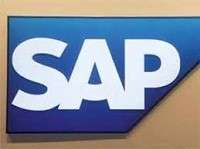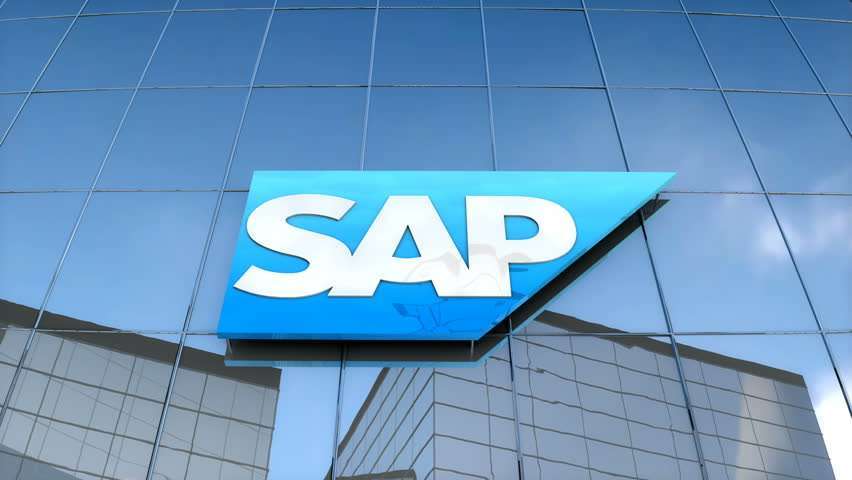
Edumantra has the best explained full form of SAP. Take advantage of freely available SAP full form at our website. Remain full of knowledge of SAP meaning. We would like to tell that the full form of SAP is System Applications Products.
SAP — Systems Applications Products in Data Processing
SAP Full-Form refers to Systems Applications Products in Data Processing. SAP is software used in business for processing an organization’s entire functionalities. These functionalities are processed for obtaining a UNIFIED solution. New standards have been established by the SAP R/3 in giving solutions related to the management of business information. The original idea of SAP was to give the ability to the customers that help them in interacting with a common database (corporate) for a wide application range. The applications are gradually assembled.

Also Read:-
B.COM Full-Form | What is Bachelor of Commerce (B.COM)
A number of corporations, such as Microsoft and IBM are using the products of SAP for running their business. The main aim of the SAP R/3 software is to give solutions pertaining to logistics, distribution, finances, etc. The applications of SAP that are made around the Rt3 system gives the capability of managing the plants, production materials, asset, archive documents, production personnel, and operations, cost accounting and finances. The Rt3 system utilizes the `client/server’ model and can run on various platforms.
Versions of SAP Software
SAP has many versions. The main ones are SAP R/1, SAP R/2, and SAP R/3. Here, ‘R.’ denotes the real-time data processing. SAP R/1 was the first version of SAP. It was introduced in the year 1972. It consists of one-tier architecture. SAP R/2, which is the second version of SAP, was launched in the year 1979. It is a business solution that is more oriented towards dialogue and database. SAP R/3, which is the version mentioned many times in the above paragraphs, is the latest one.
Also Read:-
BBM Full-Form | What is Bachelor of Business Management (BBM)
Modules of SAP Software
There are a number of modules in SAP. The base module of SAP is FT or Finance. It covers the areas like GL or General Ledger, AR or Accounts Receivable, AP or Accounts Payable and AA or Asset Accounting. The sister module of FT is the CO or Controlling module. It is utilized for documentation of events, coordination of events with planned data and internal reporting. The areas covered by it include CCA or Cost Center Accounting, PC or Product Costing, PA or Profitability Analysis, PCA or Profit Center Accounting, and IC, or Internal Order. The SAP’s module that is responsible for the distribution and sales of an organization is SD.
Also Read:-
BCA Full Form | What is Bachelor of Computer Applications (BCA)
Its components are sales inquiry, sales organization, order processing, customer master data, goods and delivery, sales conditions and billing. The Baz or human resource module is responsible for handling personal information like employee benefits, salary, hiring etc. Its components include PM or Personnel Management, PD or Personnel Development, PY or Payroll, CM or Compensation, BM or Benefits, LN or Loans, OM or Organization Management, PA or Personnel Administration, PT or Personal Time Management, and ECM or Enterprise Compensation
Advantages of using SAP Software
The usage of SAP provides many benefits that make it more popular as compared to other software. It is highly flexible. Its solutions can be customized to suit the businesses. It can be integrated easily with other business modules. This fact is absent in other business software. In others, like ORACLE manufacturing and BAAN, different software is needed for different business modules. SAP also provides continuous support. SAP helps by reducing the costs of the processing of sales orders. It also decreases the time needed for calculating the selling price.
It aids in increasing the flow of cash. It raises the amount of savings since it provides access to the information of real-time transaction by all users (that is, the authorized ones). It decreases the number of DSO or days sales outstanding by reducing the working capital and raising the flow of cash. It also helps by increasing investment potential. The billing process is also subjected to better management, which leads to less number of disputes that accompanies per order, and quicker payment. The loss in sales gets reduced by the usage of SAP, and this leads to an increase in revenue. The customer satisfaction increases and the freight and distribution costs are reduced.
SAP Company
SAP is a global software company in Germany. Its products include enterprise software that manages customer relations and business operations. The head office of SAP is located in Walldorf, Germany. It has more than one hundred thousand customers that extend over one hundred and ninety nations.
Products of SAP
The main products of SAP include SAP Business One, All-in-One, ByDesign, and Suite 7. SAP Business Suite 7 is designed for large enterprises, that is, companies that have more than twenty-five hundred staff and choose vertical markets. SAP Business ByDesign and All-in-One are made for medium and small businesses in the lower middle (five hundred or less staff) and upper-middle (twenty-five hundred or less) markets respectively.
All-in-One is an ERP and CRM software application that delivers industry solutions. It has eight to sixteen week implementation period, and its back-office functionality is much deeper as compared to other business solutions. It also has seven hundred add-on products and supports twenty-five languages.
ByDesign is an online and cloud computing solution for the organizations that desire SaaS or Software-as-a-Service value proposition. Its implementation period ranges from four to eight weeks and supports four languages. SAP Business One is made for small businesses that have a maximum of one hundred staff. It has five hundred add-on products, supports twenty languages and two to six week implementation period.
SAP Verticals
There are twenty-six vertical markets in which SAP invests for delivering industry-specific ERP solutions. The industrial sectors that obtain the company’s most attention consist of logistics & transportation, retail, public/government sector, consumer products, telecommunications, oil & gas, financial services and business services. The ecosystems and partner channels of SAP also offer huge support to other industry solutions.
Customers
SAP has one hundred thousand customers of all locations, industries, and sizes. Although the Business Suite, the flagship product of the company, is made for targeting the enterprise companies, its market is highly saturated. The company is progressing to fulfil its objectives of growth. The company’s focus on the middle market is not new, but it has been increased considerably. According to SAP, more than eighty thousand, or seventy-eight per cent its total customers, comes under the midsize and small enterprises. It retains fairly large customer base in the midmarket, even if it considers organizations, having twenty-five hundred or fewer employees, as the midsize companies.
Certain complex user groups have been formed by the customers of SAP. These groups have the responsibility of engaging the company at the executive level. These groups contain partners as well as customers. They engage in delivering education, sharing experiences and collectively influencing SAP. This influence was highly noticeable when the company announced the rise in the yearly maintenance fees, which was ultimately delayed due to the pressure from these groups. The organization of the user groups is based on geographies, like DSAG or German Speaking User Group or ASUG or American SAP User Group.
Partners
The number of business partner programs that are managed by SAP is nine. These programs include a very large number of partners as well as partner solutions, and it extends to include the ERP products. This company also provides third-party ecosystems, like Ecollub. The Ecollub consists of around five hundred solutions from nearly two hundred and fifty partners. It provides a marketplace for reviewing and purchasing solutions, and a community forum for reviewing and rating solutions.
It is also planning to form a cloud community for its business apps of the On-Demand and ByDesign lines. It is also focusing on keeping pace with its rivals like Marketplace (of Microsoft), SuiteCloud (of NetSuite) and AppExchange (of Salesforce.com) that have brought the online ecosystems at an entirely new level, and made them essential to acachievinghe market share of the cloud computing technology.
Download the above Full-Form in PDF (Printable)